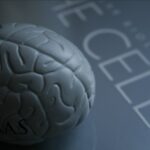Dementia develops when there is progressive damage to the brain. Frontotemporal dementia is the term used to describe a number of different conditions, in which particular areas of the brain are affected leading to characteristic personality and behavioural changes.
Frontotemporal dementia is also known as Pick’s disease or frontal lobe dementia
The name refers to the parts of the brain that are affected in this form of the condition. The damage happens to the frontal and the temporal lobes. The connections between the lobes are affected, some of the chemical messengers that allow the nerve cells to communicate are lost and the brain cells in these areas die. With time, progressively more nerve cells die so that the brain tissue shrinks. This brain damage leads to signs and symptoms that can differ from those usually seen in Alzheimer’s disease.What to expect with frontotemporal dementia?
Here is what you can expect from frontotemporal dementia:Brains and behaviour
The frontal lobes, as the name suggests, are found at the front of the brain behind the forehead. This area controls behaviour, planning, problem solving and emotional control. One particular area also facilitates speech.There are two temporal lobes, one on each side of the brain. They help with communication, knowing names and the meaning of words. They are also involved in recognising people and objects.Because a different area of the brain is damaged, people with frontotemporal dementia may present with different symptoms from people with Alzheimer’s, especially in the early stages. Instead of problems with forgetfulness and short-term memory loss, damage to the frontotemporal areas can lead to changes in personality and struggles with speech and language.Dementia of these parts of the brain can lead to individuals behaving rashly or irresponsibly, this can cause problems with driving, so it is particularly important for people with frontotemporal dementia to inform the DVLA.There are three types of frontotemporal dementia, with each showing different symptoms especially in the early stages. As with all forms of dementia, the signs can be very subtle at first. With time, there is increasing brain damage and the differences between the types of the disease become less evident. Eventually, the disease will affect the individual’s ability to function and live independently.Behavioural variant frontotemporal dementia
People with this type of frontotemporal dementia lack control over their behaviour. Even in the very early stages they may not understand or appreciate what is happening to them, so problems are usually picked by friends, family or work colleagues. Early symptoms include:- Loss of inhibitions and behaving in a rude or socially inappropriate way.
- Apathy and loss of interest in people and things they used to like, without appearing sad.
- Loss of empathy and becoming selfish, unfeeling and unresponsive to the emotions of others.
- Compulsive behaviours, obsessive new interests and repetitive use of words and phrases.
- Deterioration in social skills and poor table manners.
- Change in appetite. People affected may crave sweet, fatty or fast foods and may eat, drink or smoke too much.
- Problems with planning, organisation and decision making. These can cause difficulties with work and home lives.
Progressive non-fluent aphasia
People with this form of the disease have gradually increasing language difficulties and problems with speech. Early symptoms include:- Hesitant, slow or stuttering speech. They may struggle to get their sentences out or mispronounce words.
- People affected may develop grammatical errors. Some people speak in a pattern called ‘telegraphic speech’, in which linking words like ‘to’ or ‘but’ or ‘and’ are left out.
- Problems understanding complex sentences.
Semantic dementia
People with semantic dementia also have language problems. However, unlike aphasia, their speech is fluent but may indicate problems with understanding what objects are and finding the right words, confusion about the meaning of very familiar words, or difficulties finding the right word, so that they may describe objects or use generic terms. Problems recognising familiar people and things.Early onset frontotemporal dementia
Frontotemporal dementia is one of the types of dementia that can affect younger people. Although it can strike in the elderly, it’s most often diagnosed between forty-five and sixty-five years of age. In fact, The Alzheimer’s Society says that it’s the second or third most common dementia in people under sixty-five and that it affects men and women roughly equally.How to diagnose frontotemporal dementia?
There are no specific tests for diagnosing frontotemporal dementia. However, clinical history and some non-specific tests may help. The diagnosis of dementia is difficult because of overlapping symptoms. Non-specific tests helpful in diagnosis include:- Blood tests: to rule out any other major pathology in the body.
- The sleep study test: it helps find out the cause of obstructive sleep apnea, which some patient with frontotemporal dementia may experience.
- Neuropsychological test: it may be conducted to determine what type of dementia the patient has.
- Brain imaging studies: these are also of great importance in helping reach the diagnosis of frontotemporal dementia. Imaging techniques include MRI scans and Fluorodeoxyglucose positron emission tracer scan (FDG-PET). With the help of an FDG-PET scan, areas of brain degeneration can be identified easily.
Frontotemporal dementia diagnostic criteria
Clinical history that is more consistent with frontotemporal dementia includes certain characteristic features. The diagnostic criteria require three of the following six clinical features:- Disinhibition
- Apathy/inertia
- Loss of sympathy/empathy
- Perseverative/compulsive behaviours
- Hyperorality
- Dysexecutive neuropsychological profile
What is the treatment for frontotemporal dementia?
The treatment of frontotemporal dementia is both pharmacologic and supportive. Medical drugs include some antidepressants such as trazodone and selective serotonin reuptake inhibitors (SSRIs).The variants of frontotemporal dementia
Frontotemporal dementia can occur in three clinical variants. These are:- Behavioral variant
- Semantic variant (SD)
- Progressive non-influent aphasia




